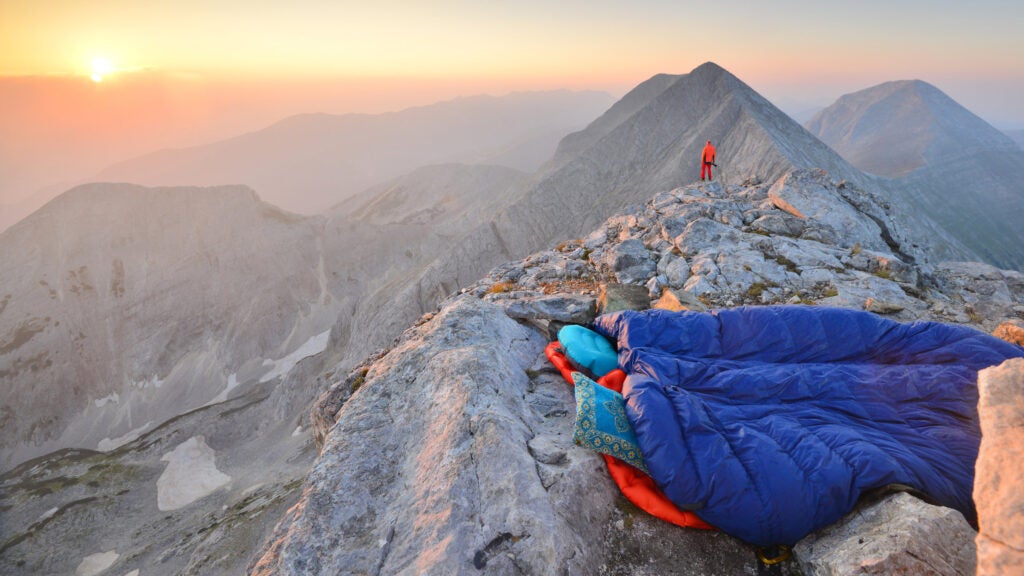Products You May Like
Heading out the door? Read this article on the new Outside+ app available now on iOS devices for members!
Download the app.
This year marks Backpacker’s 50th anniversary. To celebrate, we asked four of our favorite writers to write a letter to the backpackers of the future—specifically, to 2073, when Backpacker will turn 100 years old. Here, ultralight columnist Nathan Pipenberg speculates about how gear might advance—or go backwards—over the next 50 years.
Dear Backpackers of 2073,
I’ll start off with a wild prediction: Fifty years from now, there will be no such thing as being “out of service.” The entire planet, from New York City to the wilds of Alaska, will be blanketed by a cheap, reliable satellite network. To you, this amazing achievement probably doesn’t seem so strange. But this safety net hovering unseen above you has likely not only changed how you outfit yourselves for a trip into the wilderness, but how you think about the backcountry itself.
Right now, we have satellite communication in the backcountry, but it requires clunky, specialized devices and expensive service plans. Unless we have cell phone service (remember something called 5G?), it’s actually pretty tough for us to get in contact with each other in remote areas. Our national parks, forests, and wildernesses are still largely “off the grid,” and plans to bring cell phone towers and wireless Internet to Yosemite and Yellowstone still spark lively debate about whether we should be fighting to keep our natural spaces unconnected. In your time, I imagine that technology has put that debate to bed.
I’m sure core backpacking gear has gotten better as well. Right now, we consider a backpacker to be “ultralight” if they carry a baseweight of 10 pounds or less, and a total pack weight of about 20 to 25 pounds. Getting there requires making tough choices and occasionally breaking out the credit card for high-end gear. But thanks to stronger and lighter materials in pack frames, tents, and footwear, I assume that the average beginner backpacker in your time carries that or less.
On the other hand, I wonder if all this tech is breeding rebellion. After all, if a tiny device on your wrist or in your ear can instantly connect you with anyone else in the world, can you ever find true solitude? Perhaps one way is to head out without a safety net on purpose. I envision a subset of hardy explorers who chase “analog” experiences the same way we currently look for unclimbed mountains or fastest known times.
Let’s call this group the Backcountry Luddites. Perhaps their motivation is primarily aesthetic, and they scour second-hand stores for vintage external frame packs, gas stoves, and used fleeces. But maybe it’s something more: Maybe after more than a hundred years of chasing optimization, comfort, and safety, backpacking has just started to feel too easy and too much like the rest of their lives. So they leave the electronics at home and navigate by map and compass, or only carry gear they’ve made themselves. As fewer and fewer places feel truly “remote,” backpackers who crave the feeling of exploration might need to get creative. Relying on your own wits and skills to guide you through sounds like a good way to tap into the magic again.
You may not have solved all our gear issues. I wonder if you’ve finally found a fabric that’s actually both waterproof and breathable. Right now, even our best attempts are lackluster: If we go hiking in a summer rainstorm, we’ll get drenched one way or another, by sweat or precip. I hope you’ve figured out the outdoor industry’s overreliance on plastic and synthetic chemicals—it turns out that making even those lackluster rain jackets use some pretty toxic industrial processes. (Either way, high-tech fabric is a poor excuse to contribute to environmental degradation, and I’m truly sorry we left you with our mess.)
In our defense, we’re trying to change. Recycled fabrics are increasingly common and it seems like major brands are taking the issue seriously, even if large-scale solutions are still wanting. To us, finding an ethical way to create goods—whether that’s outdoor gear or everyday essentials—without relying on fossil fuels and extractive processes feels like the challenge of a lifetime. I really hope you can look back and say that we figured it out.
There’s some tried-and-true outdoor tech that I bet you’re still using today. I predict that high-quality goose down is still the top choice for sleeping bags and warm jackets. To date, even the warmest synthetic insulation, made with a space-age material called Aerogel, still can’t rival Mother Nature. If you’ve finally replicated the secrets of down, my hat is off to you.
Finally, I hope that the same technological advances that made backpacking gear lighter have made it more affordable too. Right now, it’s hard to find equipment that ticks all three boxes: durable, inexpensive, and lightweight. Inexpensive gear tends to be heavy and uncomfortable, prompting many new backpackers to believe that pain and discomfort are just part of hiking. The expense of high-quality gear means that backpacking is largely a pastime of the well-off, and if backpacking is going to survive, that needs to change. I’m confident that you’ve made it happen.
Nathan Pipenberg
